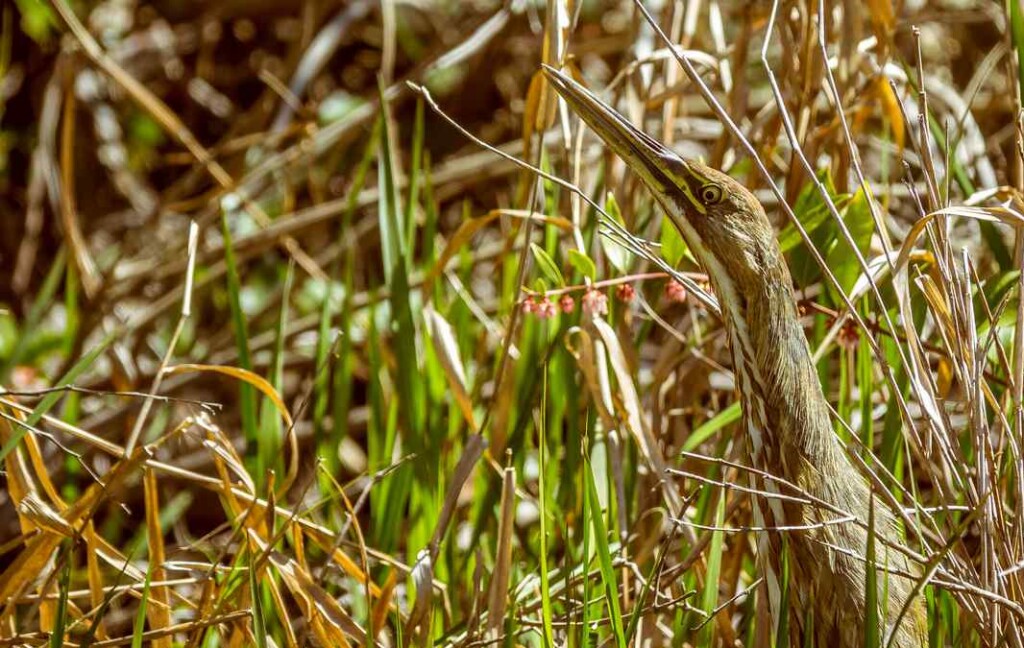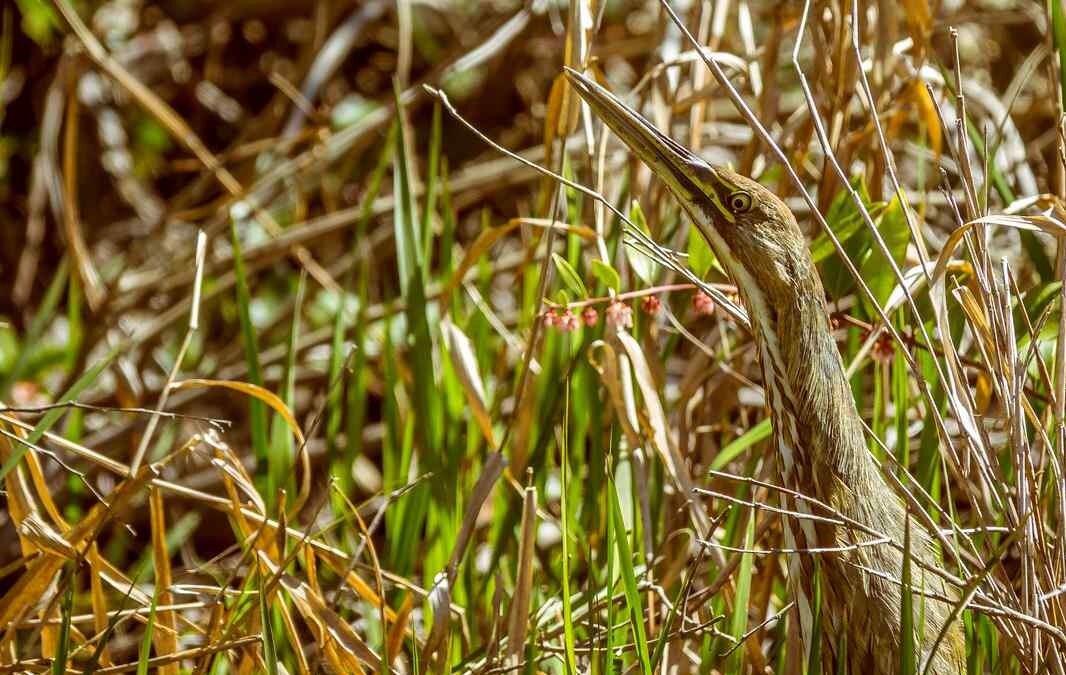
What’s secretive, pretends to be a stick, and is sometimes confused with a mythical creature?
The figure in focus of this question is a beloved bird that’s returning in numbers to Tasmania for the first time in 40 years.
The Australasian bittern disappeared from Tasmania’s northern reaches for decades following a hydropower project in 1964 that disrupted a unique local wetland ecosystem called the Lagoon of Islands.
Raising the water level, flooding the islands, and eliminating the prime habitat of the bird, its return is a watershed moment in the area’s recovery following the elimination of the dams in 2012.
Wielding an “eerie deep hoot” that’s supposed to be similar to a mythical creature called a Bunyip, a man-eating swamp creature, the few Aborigines who will try and describe it say it looks like a seal or swimming dog, while others describe it as having a long neck and small head. Both forms are accused of preying on humans.
The bittern is not a myth, but like the Bunyip, it is nocturnal and elusive. In fact, it has a cool camouflage trick. This large heron stands stock still with its bill pointed at the clouds, while a stripe of feathers on its neck, combined with its rough brown plumage, makes it look perfectly like a group of reeds.
ABC News Australia spoke with one of the birders in Tasmania’s community of Longford, around 40 kilometers north of the large town of Bothwell, who made up citizen science programs that recorded the bittern’s call for the first time in 40 years.
MORE BIRDING STORIES: Rare Nocturnal Parrot Described as ‘the Holy Grail of Ornithology’ Finally Recorded by Rangers in Remote Desert
“It’s probably one of the memories of my life in terms of birding, and I’ve done a lot of birding,” said bird expert Geoff Shannon, who additionally spotted a pair of bittern chicks through his binoculars.
MORE CHARISMATIC BIRDS: First Known Photos of ‘Lost Bird’ Not Seen in 2 Decades are Captured by University of Texas Scientists
The Lagoon of Islands was a rich wetland ecosystem of floating reed mats and small islands where the bitterns could nest, hide, and hunt.
The bitterns’ return is the restoration of a top member of the food chain, showing how well the lagoon as a whole has recovered, from the smallest fish or amphibian up to the largest bird.
LISTEN to its call below…
SHARE This Great Conservation Story With Your Friends Who Love Birds…




















